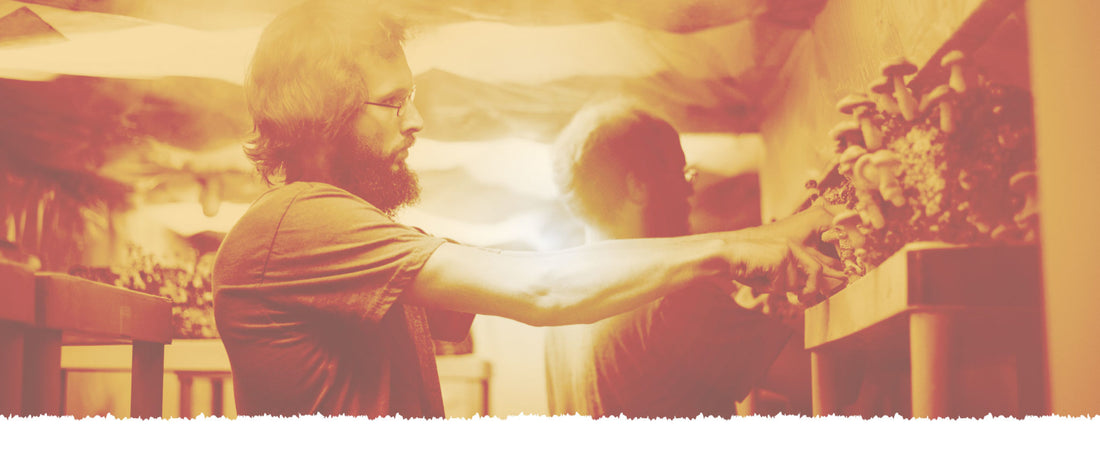Mushroom farming is becoming more prevalent as the taste for gourmet mushrooms grows. Discover some important insight from the pros so you can grow mushrooms
Mushrooms are growing in popularity and I couldn’t be happier about it. From mushroom farming to mushroom foraging and mycoremediation, the interest in our fungal friends are leading to new products, new environmental practices, new mushroom farms, and a whole lot more of people exposed to these tasty, medicinal morsels.
Mushroom farming can be done by anyone if they have the drive and some know-how. Being a great mushroom farmer, or doing it on a commercial scale, is another story. At Fungi Ally, our farming process has evolved over the years. We began with outdoor log cultivation of shiitake mushrooms. Then then moved indoors and worked with cultivation on straw. We then got bigger and started using larger, ready-to-fruit mushroom blocks. We then got even bigger, focusing on indoor cultivation with supplemented sawdust. We have now been using this method of commercial mushroom farming for the past three years.
We love mushrooms and have dedicated so much time and attention to our processes of growing, selling, and educating the public about fungi. We sell mushrooms and materials for others to grow mushrooms, like sawdust and grain spawn. We provide grow kits, medicinal mushroom extracts, and a variety of spawn and tools to the global community.
Today I want to share four tips with you if mushroom farming is a serious interest of yours and you want to bring your process to the next level. There is also an online commercial mushroom farming course you can take.
Four tips for mushroom farming
Step 1: Determine your starting size
Begin with a clear goal of how many mushrooms you want to grow. This should include the amount of pounds of mushrooms per week, what species you want to grow, and the capacity you have for investment in cash flow.
Realize that the mushroom poundage you want to grow dictates the space you will need. These numbers will also give you an idea of how many customers you will need to sustain your business and how many mushrooms you will need to have in the production at all times.
Furthermore, the species you plan on growing dictates the process and equipment you will need, and time it takes to grow. For us, we began with shiitake logs to start, then added oyster mushroom to our offerings. I recommend most people start with oyster mushroom because of the quick crop cycle. Oyster mushrooms are aggressive colonizers that can outgrow contamination, making them a great mushroom to start with. They also offer a pretty high yield that can be grown in a variety of methods, like straw.
Step 2: Focus your mushroom farming at first
There are lots of steps to learn and perfect for the indoor farming process opposed to outdoor mushroom growing. It’s important to focus your efforts on one or two species and mastering that, then diversifying from there. Don’t try to do it all from the beginning. Instead, trying bringing in mushroom blocks to work on your volume; then work with a variety of species and spawn production to start. More can be brought in-house once you have a grasp on these first steps.
Step 3: Have a clear vision and mission
Having a clear vision will ultimately help in your decision making process. Our mission is: “Creating a world of connection and balance by revealing the power of mushrooms”
Step 4: Prioritizing is imperative to success in mushroom farming
There are a lot of processes within commercial mushrooms farming. Don’t do them all from the start. Learn to prioritize and work only with the processes you need now, and don’t be afraid to fail. It’s good to have some minor failures to learn from in mushroom farming. Remember, patience and persistence is your biggest ally along the journey.
Interested in commercial mushroom farming? Do you need a pro mushroom consultant? If yes, get in touch with me today.

